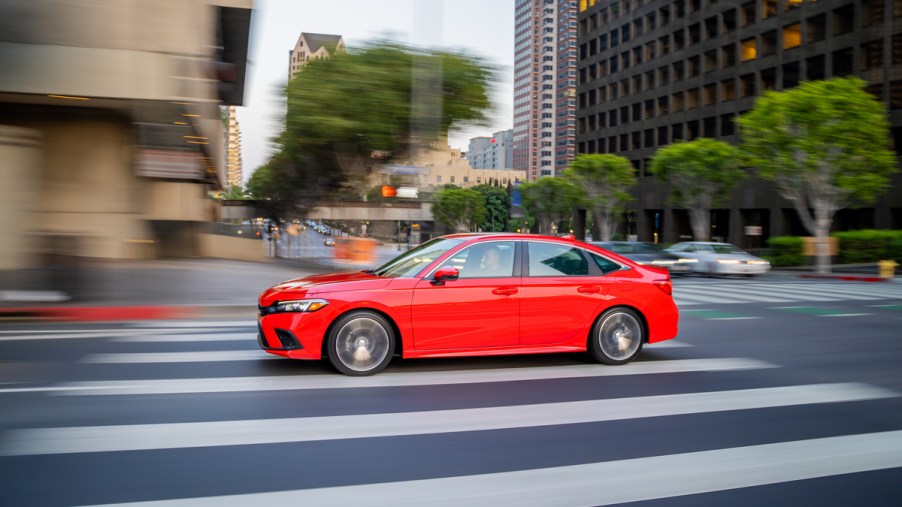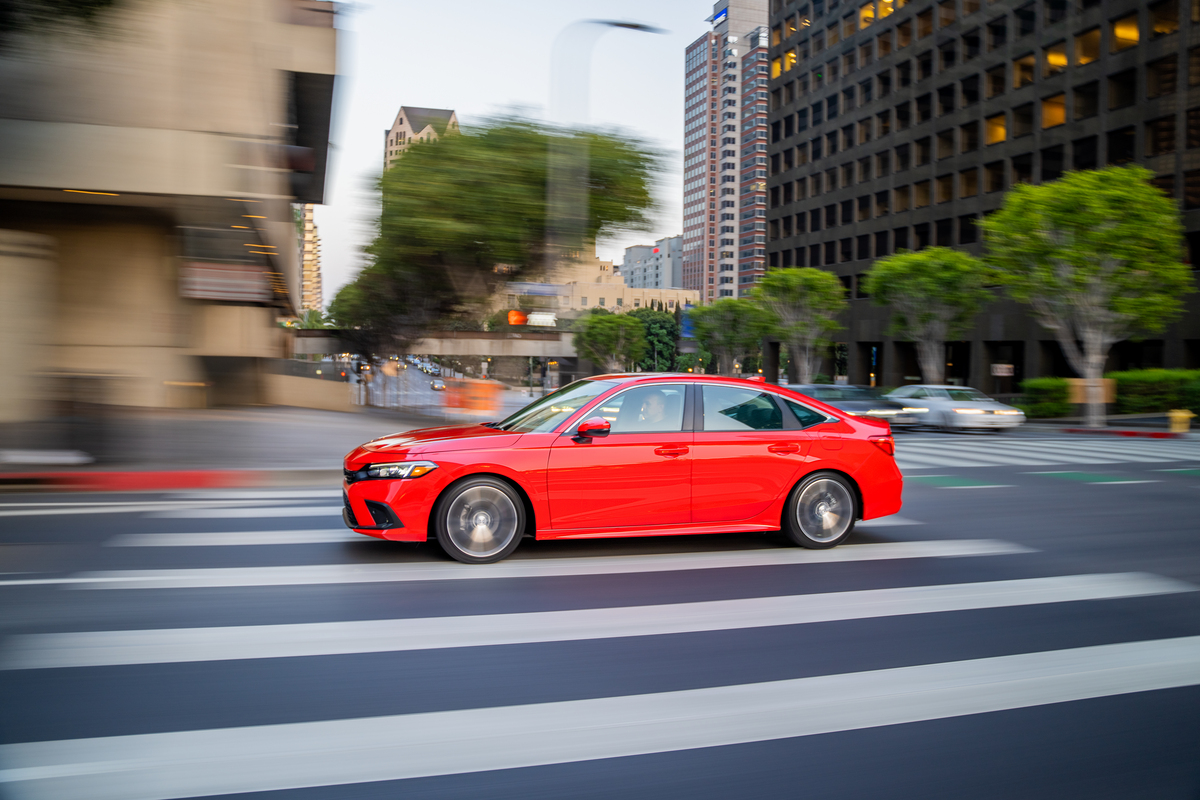
50 Years of the Honda Civic
What springs to mind when you think of the word “car”? Unless you have a special place in your heart for a specific model, you probably think about a generic four-door something on wheels. If you had to draw it, it would probably come out looking like a Honda Civic. And that would be understandable—the Civic has been a quintessential “car” for decades.
The Honda Civic is officially in its fifth decade, and it’s seen a lot in its relatively long life. Explore the history of the Civic and see what’s made this happy little compact car a surprising powerhouse in both the new and used-car markets.

1970: A Civic for a civil society
The evolution of the Civic started in Wako, Japan, in 1970. Honda told designers to create a surefire winner that would help boost low sales. The original Civic had the long, trunk-heavy look of classic cars at the time, but as designers trimmed and trimmed the shape, it became a shorter, rounded hatchback. Honda named the car “Civic” to represent the car’s accessibility for average citizens and growing cities, according to U.S. News.
1980: the second generation of the Honda Civic
Ten years later, Honda was ready to introduce new design ideas. The Civic’s second generation included a sedan and wagon body style, thanks to a lengthening of the wheelbase. As the popularity of the Civic gained speed, Honda worked to make changes quickly. The second generation was short-lived.
1984: The all-new Civic hatchback, wagon, and sedan
Honda made big changes to capitalize on the growing interest in the Civic, and 1984 marked the beginning of the third generation. Honda kept all three body styles—hatchback, wagon, and sedan—but built them all on a new platform. The third-gen Civic stretched out an additional five inches in the wheelbase and added the very first Honda Civic Si model. Fun fact: some nicknamed the third-generation Civic Wagon “Tall Boy.”
1988: Honda kept on cranking out new generations
A short four years later, Honda released yet another new generation for the Civic. Changes for this generation were more subtle. Major adjustments included an improved suspension system, a slight increase in length, and an available “Civic Grand Sedan” that was released in 1990 and had an entire 105 horsepower.
1992: The 5th-gen Civic introduced the del Sol
Side airbags became a thing for the Civic only in the early 90s. That’s right—1970-1991 Honda Civic models were trusting your entire brain and body to front airbags. Side airbags became standard for all trim levels in the Civic lineup, and anti-lock brakes were also introduced as an option on select models.
Additional offerings for the early-90s Civic lineup include a four-seater Civic coupe, and the Honda del Sol—a sportier car for the budget buyer.
1997: The “Miracle” Honda Civic
The sixth-generation Honda Civic was referred to as the “Miracle” model, though there’s no specific reasoning for it. One possibility? The addition of a new CVT provided smoother shifting and could absorb shock better when shifting gears. The disappearance of the Civic Si model in the mid-90s felt like anything but a miracle, but Honda quickly gave a consolation prize in the form of a 160-horsepower Civic Si Coupe.
2003: The very first Honda Civic Hybrid
The seventh-generation Civic got to welcome some big changes. Big, in regards to its further-stretched 103.1-inch wheelbase. The early-00’s Civic models were 16.5 inches longer than their first-gen counterparts. Honda introduced the first Civic Hybrid in 2003, which saw up to 48 mpg in the city and up to 51 mpg on the highway, according to a 2002 review by Car and Driver.
2006: Big design changes for the eighth-gen Civic
The jump in design from seventh to eighth-generation Civic was fairly huge. The Civic moved away from a squat nose and a tucked trunk toward a steep windshield, a shortened hood, and a sloping rear end. The Honda Civic Si coupe received a new 197-horsepower engine. In 2007, the Civic would be upholstered with leather for the very first time. Fancy.
2012: Honda makes bad choices
The ninth-generation Civic further tweaked its design choices, giving it an aggressive face and some nice, swoopy lines. However, Honda made adjustments to the steering and suspension that left the Civic feeling dull and sluggish, and fans were displeased. Fortunately, the brand quickly made small changes the next year to improve ride quality.
2016-17: The 10th-generation Honda Civic
The tenth-gen Civic came flying onto the scene with newer engine options and a slightly improved CVT. Other notable additions were an all-new 2017 Civic Hatchback and a stunning Civic Type R. This first iteration of the Type R arrived with 306 horsepower and 20-inch wheels.
2022: Over 1,000,000 Civics sold
Now in its eleventh generation, the Honda Civic continues to prove its staying power. The newest models offer surprisingly premium features for the price, and it continues to be one of the more affordable compact sedans on the market. Honda has sold over a million Civic cars since this nameplate first arrived on the scene, and it doesn’t appear to be going anywhere for a long time.
When you’re a Civic, 50 is the new 20.


